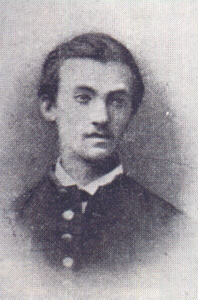Doktoro Esperanto

found image of L.L. Zamenhof (1859-1917)
Polish physician Lejzer Ludvig Zamenhof invented the language Esperanto which he outlined in his book Lingvo Internacia (1887) under the pseudonym Doktoro Esperanto. The Espernato Association of Britain is actively promoting the language today (http://www.esperanto-gb.org/).
For their installation 'Shelter of Hope' to be built for The Sweetest Dream exhibition, Tamas Kaszac and Aniko Lorant are creating an Esperanto classroom constructed from locally found materials and rubbish. During The Sweetest Dream, audiences can access information and resources gathered and made by the artists as well as take part in a free Esperanto class by Terry Page.
As Terry pointed out, 'there is a happy coincidence: the name "Esperanto" derives from "esperi" = to hope; a principal artistic contributor to your event is Nada (meaning "hope") Prlja; and your own surname ... need I go on?'
Some of the ideals and facts of the language include (see: http://satesperanto.free.fr/leaoj/sateb.html):
Esperanto does not belong to any nation and therefore all its speakers communicate on equal terms. With any other language it is always the native speaker who has the advantage.
Esperanto encourages friendship and freedom of expression across frontiers regardless of race or creed.
Esperanto is the easiest language that you can learn due to its regular grammar and pronunciation. It can be learned in a fraction of the time needed to learn other languages.
Esperanto is spoken in over 80 countries around the world.
Esperanto does not threaten individual countries' culture or language but offers a common means of communication for all.